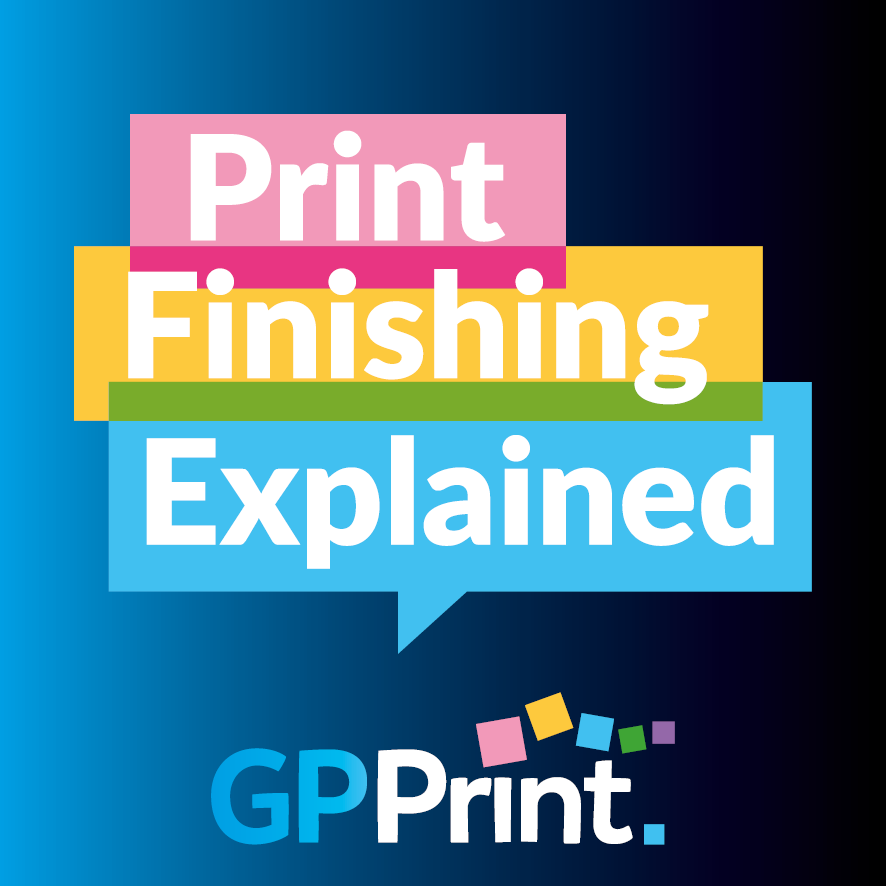Print Finishing Options Explained
Wed 2nd August 2023

Print Finishing Explained
Additional Finishes
These types of finishes are in addition to the product to typically enhance the look and feel of the product.
Lamination: This is to cover a side or both sides of a sheet of paper with a plastic film in either a glossy, matte or soft touch option. Glossy is a shiny finish. Matt is what we would call a flat finish it matts back the colours. Soft touch is known as many things. It has a matt finish but with a feel similar to a peach skin.
Foiling: This is almost like having a colour printed but rather than an actual colour it is a metallic film that is applied in a chosen shape or lettering to enhance your print. We can either add foiling to a full colour print which will most of the time require a lamination first so we can print the colour first then laminate and put the foil on top. The other option is to just have foil on its own, this process looks amazing on a coloured card to really enhance the foil. When supplying artwork for foiling we would ask for the printed area to be shown with an extra page of just solid black and white depicting the area to be foiled.
Perforation: This is to cut through a sheet with gaps to hold the sheet together but allow for the sheet to be easily separated when needed.
Numbering: When you need each sheet to have a incremental number that can for example correlate to a job number to ensure ease of cross reference.
Product Specific Finishes
These finishes are normal part of the product type.
Score: This is when the card or board is forced inward using a straight line form to create a point that can easily be folded without causing damage to the material or print.
Crease: Similar to a score this is using a wheel rather than a form to create the indentation to allow the print to be folded. Using a wheel can be useful for creating score lines in various directions such as boxes.
Trim: To cut the printed material in straight edges using a guillotine
Machine Cut: This is to cut out like above but with the ability to cut curves and shapes, unlike trim this is not limited to just straight edges.
Kiss Cut: Similar to Machine Cut however this just cuts the surface for things like stickers that can cut through the sticker material leaving the backing paper so the stickers can be held together and easily removed.
Perfect Binding: Used to bind a number of pages together with a heated glue, the finished product is a traditional paperback book.
Saddle Stitch: Like perfect binding this is used to hold sheets but these are folded in half and stapled in the centre to produce booklets.
Stab Stitch: As above but without the need to fold first. This process is used to hold pads of paper together such as raffle tickets.
Thermal Binding: Is used to hold a number of pages in a pre-made covering with glue strip that is heated up to allow the pages to adhere and stay once cooled. This is cheaper option to create quick reports.
Wiro Binding: Can also be used to hold a number of pages but uses a wire that is rolled through cut out holes on the edge of the paper to fasten the sheets together.
Coil Binding: As above but with a continuous plastic spiral that holds the sheets together for longer use.
If any of the additional printing finishes or product-specific finishes take your fancy, get in touch with us here at GP Print for the best printing services in Peterborough.
Best Wishes,Peter Martyr
GP Print LTD.